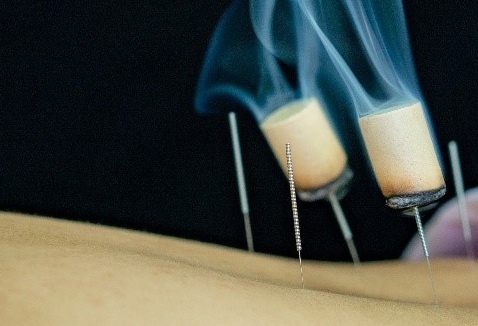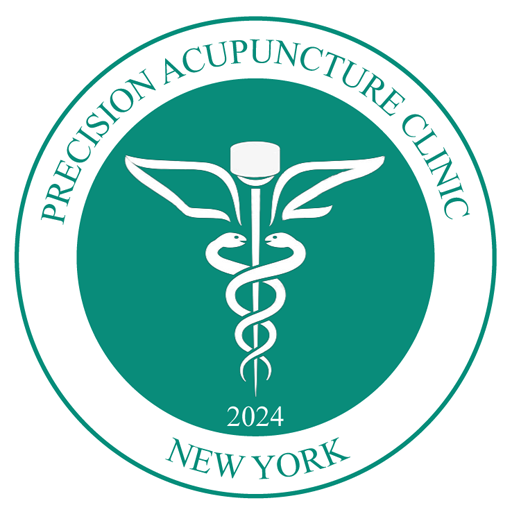Moxibustion and TDP Lamp
The following is a personal understanding at our Precision Acupuncture Clinic, and we use moxibustion and TDP lamp either individually or combinational for treatment dependent on various clinical conditions.
Moxibustion
As an ancient method, moxibustion was created in China with a similar or even longer history compared to acupuncture. As a result, in China, these two TCM approaches are named together as acupuncture and moxibustion. In essence, moxibustion is a heat treatment.
Moxa (prepared from the leaves of Artemisia vulgaris)
The leaves of Artemisia vulgaris are a Chinese herbal medicine and can warm acupuncture meridians and expel the cold. One feature of moxa is its ability to provide warmth instead of harsh burning, and such warmth can penetrate deeper tissues under the skin.
After many years of clinical practice, the moxa produced by Qi Chun, Hubei, is considered to have the best quality due to its higher contents of effective substances, higher heat-generating efficiency, and deeper heat penetration. Notably, Xing Zhou moxa also has a higher content of certain trace elements, such as Mn and Ni, and macroelements, such as Mg and Ca, in addition to other trace elements including Zn, Fe, and Se. Those elements exist and perform important functions in the human body. This is probably attributed to the local soil and weather conditions that are more appropriate for the culture of Artemisia vulgaris.
Finally, moxa made from the leaves of Artemisia vulgaris that have been stored for three years is preferred because its burning generates effective yet moderate warm heating, which can provide a safer warming process without drying the tissue fluid.
Electromagnetic radiation from regular moxibustion
Visible light, infrared, and microwaves belong to non-ionizing (do not ionize atoms or break chemical bonds) electromagnetic radiation (EMR), and their photons collectively transfer carried energy primarily into a heating effect on living tissue. As a form of EMR, thermal radiation transfers heat without direct contact (conduction) or a medium such as air or water (convection). For example, a human body of 37 degrees Celsius has a thermal radiation of infrared wave length.
Moxa can reach over 500 degrees Celsius during burning, which can generate thermal radiation of 1.5 ~ 14 micrometers, mainly in the mid-infrared range (3 ~ 25 micrometers) with a peak wavelength of around 3.74 micrometers and a secondary peak wavelength of around 9 micrometers. Notably, a 15-micrometer wavelength can penetrate tissue to a depth of around 3.8 cm. Research shows that skin surface temperature reaches about 40 degrees Celcius during a regular, safe moxibustion process.
Heat conduction from warm needling
Warm needling is a classical moxibustion techniques that uses burning moxa attached to the handle of the inserted needle. This method uses heat conduction by the metal needle to transfer the heat to the tip of the needle that can be as long as 7.5 cm in regular applications. Studies have shown that the tip temperature of the needle tip 6 cm under the skin can reach 39 ~ 41 degrees Celsius, with the best heat conductivity of silver, followed by gold and then stainless steel.

Therapeutic effects of moxibustion
Moxibustion carries out therapeutic effects by heating acupoints (3.8 cm depth in regular moxibustion and 6 cm in warm needling). Such heating may have the following effects:
1) warm local tissue and expel the cold;
2) heating to activate local molecules, cells, and fluid (blood and tissue fluid) flow, which in turn may help promote local immune response and tissue repair from inflammation and injuries;
3) heating to clear local meridian pathways, which in turn may affect the function of the distal area (tissue and organs) along meridians.
Accordingly, moxibustion can be used to treat a variety of clinical conditions that have the following features:
1) symptoms due to cold blockage;
2) tissue or organ dysfunctions that can benefit from increased local blood and tissue fluid circulation.
Finally, the use of moxibustion can promote optimized health by activating blood and tissue fluid circulation in which molecules and cells are activated to provide the needed nutrients and immune surveillance.
TDP Lamp
In 1979, a Chinese senior engineer called Wenbin Gou invented TDP lamp, which refers to Teding Diancibo Pu lamp, the lamp that radiates a specific range of electromagnetic wave. TDP lamp has a special plate that contains over 30 kinds of elements; the latter exists in human cells. Thus, TDP lamp gives out thermal radiation that can effectively activate the molecules of human cells.
As indicated by its name, the TDP lamp releases a mid-infrared range wave of 2 ~ 25 micrometers, which is a similar range compared to the spectrum released by moxibustion. Thus, the TDP lamp has therapeutic effects similar to regular moxibustion as both use thermal radiation in a similar wavelength range. That being said, the TDP lamp heats up a much wider area than regular moxibustion with a moxa stick, which focuses on an acupoint.
Schedule Appointments
Only one patient can be scheduled for one treatment hour, which ensures that each patient receives full attention during the clinic visit. However, a patient can come early to wait in the waiting area.
Please book an appointment online by clicking the Book an Appointment icon. The direction to our clinic can be found by clicking the Google Maps icon. Please feel free to contact us by email or phone.
Dr. Zhou’s availability:
If you have any issues with booking an appointment at your convenient time, please do not hesitate to contact us at (929)688-2567 or info@precisionacupunctureclinic.com. We will do our best to accommodate you.
We are located at
90 North Broadway
Suite 211
Irvington, NY 10533
